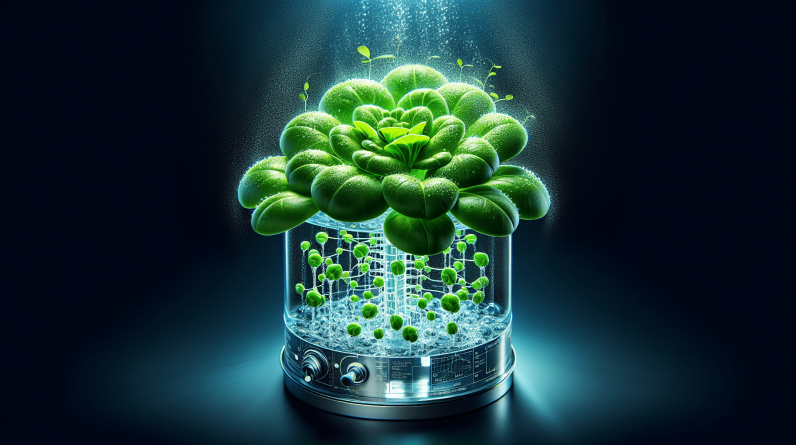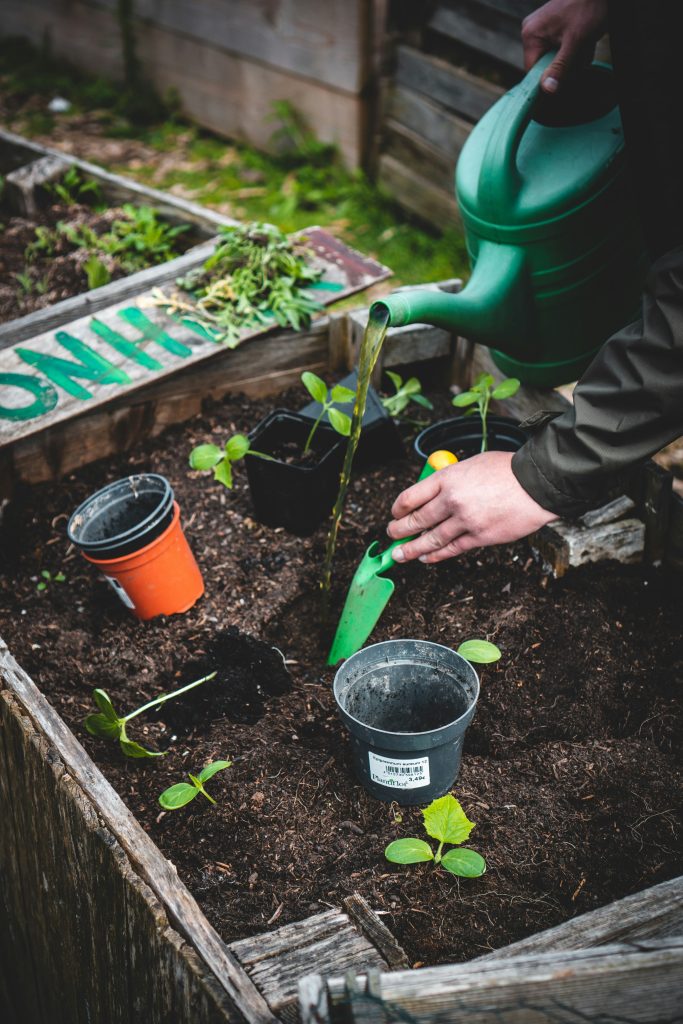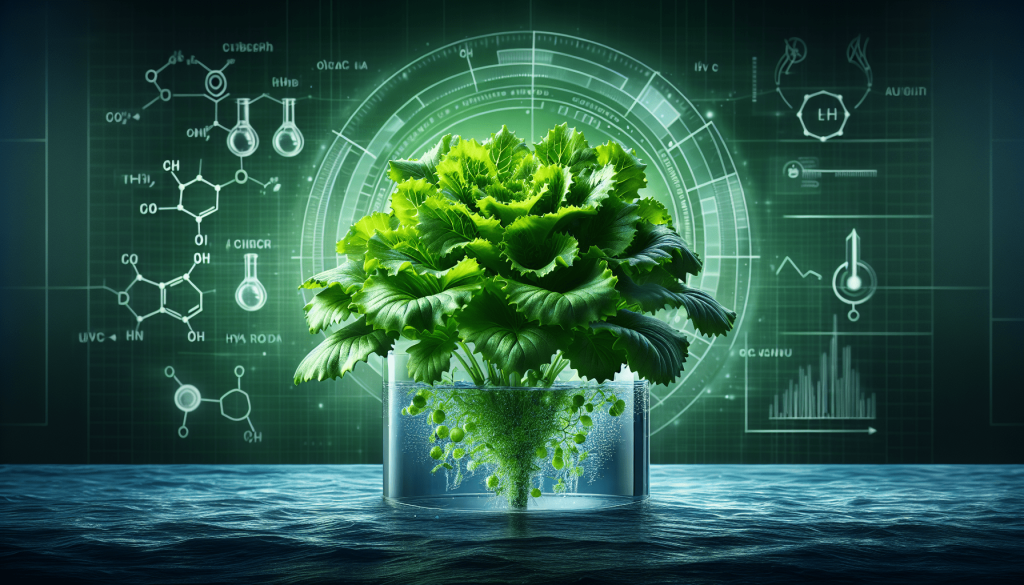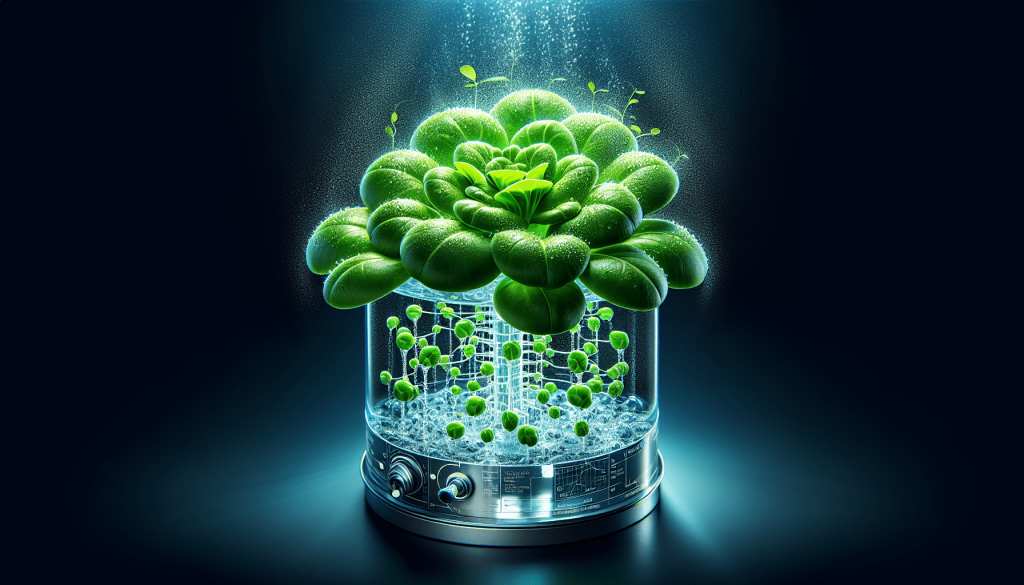
Have you ever wondered how plants can grow without soil? Well, the answer lies in the intriguing world of hydroponic gardening. This innovative cultivation method is gaining popularity, allowing plants to thrive in nutrient-rich water solutions. Want to learn more about the science behind hydroponic gardening? Join us as we explore the fascinating principles that make this soil-less technique a game-changer for modern farmers and avid gardeners.
What is Hydroponic Gardening?
The Definition of Hydroponic Gardening
Hydroponic gardening is a method of growing plants without the use of soil. Instead, plants are grown in water-based nutrient solutions, allowing for the direct delivery of essential elements to the plant roots. This innovative approach to gardening has gained popularity in recent years, offering a sustainable and efficient alternative to traditional soil-based cultivation.
A Brief History of Hydroponic Gardening
The concept of hydroponics has its roots in ancient civilizations, where the Hanging Gardens of Babylon showcased a unique form of vertical gardening that utilized a hydroponic system. However, it was not until the 18th century that scientific experimentation and advancements in agriculture led to the development of modern-day hydroponics. Since then, hydroponic gardening has revolutionized the way we grow plants, offering an array of advantages that have propelled its widespread adoption.
Advantages of Hydroponic Gardening
No Soil Necessary
One of the biggest advantages of hydroponic gardening is the elimination of soil. By growing plants in a soilless environment, gardeners can avoid the limitations and challenges associated with traditional gardening. This not only allows for increased flexibility in terms of location but also eliminates the risk of soil-borne diseases and pests commonly found in traditional soil-based gardens.
Water Efficiency
Hydroponic gardening is highly water-efficient, as it utilizes a closed-loop system that recirculates water and nutrients. Unlike traditional gardening methods, where water is lost through evaporation or absorbed by the soil, hydroponics can reduce water usage by up to 90%. This is particularly beneficial in regions with limited water resources or during periods of drought, where conservation is essential.
Faster Growth and Higher Yield
Plants grown hydroponically tend to experience accelerated growth rates compared to their soil-grown counterparts. This is due to the direct access to nutrients, which allows plants to focus their energy on growth rather than nutrient uptake. Additionally, hydroponic systems can be optimized to provide optimal conditions, such as temperature, humidity, and lighting, further enhancing plant growth. This ultimately leads to higher crop yields, making hydroponic gardening an attractive option for commercial growers.
Elimination of Weeds and Pests
By removing the soil from the equation, hydroponic gardening significantly reduces the risk of weeds, pests, and diseases. Weeds, which compete with plants for nutrients and water in traditional gardens, are completely eliminated in hydroponics. Likewise, pests and diseases that are often harbored within the soil are no longer a concern. This not only reduces the need for chemical pesticides but also creates a cleaner and healthier growing environment for the plants.
Year-round Gardening
Perhaps one of the most appealing aspects of hydroponic gardening is the ability to grow plants year-round, regardless of the climate or season. With the ability to control and optimize environmental conditions, such as temperature, humidity, and lighting, hydroponics allows for uninterrupted crop production. This is particularly valuable in regions with harsh winters or limited growing seasons, as it enables the cultivation of fresh, local produce throughout the year.

Components of a Hydroponic System
Growing Mediums
In hydroponic gardening, growing mediums serve as a support structure for the plants while allowing the roots to access water, oxygen, and nutrients. Commonly used growing mediums include perlite, vermiculite, coco coir, rockwool, and clay pellets. Each medium has its unique properties, such as water retention and aeration, and can be selected based on the specific needs of the crop being grown.
Nutrient Solutions
Nutrient solutions are a crucial component of hydroponic systems, as they provide plants with the essential elements needed for growth and development. These solutions consist of a carefully balanced mixture of macronutrients, such as nitrogen, phosphorus, and potassium, as well as micronutrients, including iron, zinc, and manganese. It is important to regularly monitor and adjust the nutrient solution to ensure optimal plant nutrition and prevent deficiencies or toxicities.
Water Pumps and Aeration Systems
Water pumps play a vital role in hydroponic systems, as they circulate the nutrient solution, ensuring proper distribution to the roots. These pumps also help maintain oxygen levels in the water, preventing root suffocation and promoting healthy plant growth. Aeration systems, such as air stones or diffusers, can be utilized to oxygenate the nutrient solution, improving root health and nutrient uptake.
Lighting
Lighting is an essential component of hydroponic systems, especially for indoor or vertical gardens where natural sunlight may be limited. High-quality artificial lighting, such as LED or fluorescent lights, can be used to provide plants with the necessary spectrum and intensity for photosynthesis. The duration and intensity of light exposure can be regulated based on the specific requirements of the plants being grown.
System Types: Active and Passive
Hydroponic systems can be categorized into two main types: active and passive. Active systems rely on pumps and timers to deliver the nutrient solution to the plants, while passive systems use capillary action or wicking to naturally distribute the solution. Each system has its advantages and considerations, depending on factors such as crop type, scale of operation, and desired level of automation.
Understanding Plant Nutrition
The Role of Essential Nutrients
Just like plants grown in soil, hydroponically cultivated plants require essential nutrients for their growth and development. These nutrients can be divided into macronutrients, which are needed in larger quantities, and micronutrients, which are required in smaller amounts. Macronutrients include nitrogen (N), phosphorus (P), potassium (K), calcium (Ca), magnesium (Mg), and sulfur (S), while micronutrients encompass elements such as iron (Fe), zinc (Zn), manganese (Mn), copper (Cu), molybdenum (Mo), and boron (B).
Macronutrients vs. Micronutrients
Macronutrients play a crucial role in plant structure, energy production, and overall growth, while micronutrients are involved in various enzymatic reactions and metabolic processes. Both types of nutrients are essential for proper plant nutrition, and deficiencies or imbalances can lead to stunted growth, nutrient deficiencies, or even plant death. Monitoring and providing the correct balance of macronutrients and micronutrients is essential for maximizing plant health and productivity in hydroponic systems.
Common Nutrient Deficiencies in Hydroponics
While hydroponic systems provide an efficient way to deliver nutrients, imbalances or deficiencies can still occur. Some common nutrient deficiencies in hydroponics include nitrogen deficiency, identified by yellowing and stunted growth of leaves; phosphorus deficiency, characterized by purplish or bronze discoloration and poor root development; and iron deficiency, indicated by yellowing between the veins of newly formed leaves. Regular monitoring and adjustment of nutrient solutions can help prevent and rectify these deficiencies, ensuring optimal plant health.

pH and Electrical Conductivity in Hydroponics
pH and Its Importance in Nutrient Uptake
In hydroponic gardening, pH refers to the acidity or alkalinity of the nutrient solution. Maintaining the correct pH level is crucial, as it directly affects the availability and uptake of essential nutrients by the plant roots. Most plants thrive in a slightly acidic to neutral pH range, typically between 5.5 and 6.5. pH levels outside of this range can lead to nutrient imbalances and deficiencies, negatively impacting plant growth and health.
Measuring and Adjusting pH
pH levels in hydroponic systems can be measured using pH meters or test kits specifically designed for this purpose. Regular monitoring of pH levels is essential to ensure optimal nutrient uptake and to prevent nutrient lockout or toxicity. Adjusting pH can be done by adding pH up or pH down solutions to raise or lower the acidity, respectively. Careful monitoring and adjustment of pH levels will help maintain a stable and optimal growing environment for the plants.
Electrical Conductivity and Nutrient Strength
Electrical conductivity (EC) is a measure of the nutrient strength in the hydroponic solution. It reflects the concentration of total dissolved salts in the water and is measured in millisiemens per centimeter (mS/cm) or parts per million (ppm). Monitoring EC levels allows gardeners to adjust the nutrient strength according to the specific needs of the plants and to ensure that they are receiving the appropriate balance of nutrients. Regular monitoring and adjustment of EC levels help prevent nutrient imbalances and maintain optimal plant health.
Hydroponic Techniques and Setups
Wick System
The wick system is one of the simplest hydroponic techniques, relying on capillary action to deliver the nutrient solution to the plant roots. In this setup, a wick, usually made of cotton or similar material, connects the nutrient solution to the growing medium. The wick absorbs the solution and allows it to gradually reach the roots. While easy to set up and maintain, this system is best suited for smaller plants or herbs with low water and nutrient requirements.
Nutrient Film Technique (NFT)
The nutrient film technique (NFT) is a popular hydroponic setup that involves a shallow, sloping channel or tube with a thin film of nutrient solution flowing continuously over the plant roots. The roots are exposed to the film of nutrient solution, allowing them to absorb water and nutrients. This technique relies on gravity to return the nutrient solution to a reservoir, creating a continuous cycle. NFT systems are ideal for leafy greens and herbs that do not require extensive root support.
Drip System
The drip system is widely used in hydroponics and involves the periodic or continuous delivery of nutrient solution to the plants using drip emitters or drippers. These emitters release small drops of solution directly onto the growing medium or plant roots. Drip systems are versatile and adaptable, making them suitable for a wide range of crop types and sizes. This setup allows for precise control over nutrient delivery, making it efficient and suitable for both small-scale and commercial setups.
Ebb and Flow (Flood and Drain)
The ebb and flow system, also known as flood and drain, involves periodically flooding the grow tray or bed with nutrient solution, allowing it to soak the growing medium and plant roots before draining the excess solution back into a reservoir. This cyclic flooding and draining mimic natural watering conditions and promote healthy root growth. The ebb and flow system is highly versatile and can accommodate a variety of crop types and sizes, making it a popular choice among hydroponic gardeners.
Aeroponics
Aeroponics is an advanced hydroponic technique that relies on air or mist as the growing medium. Plants in an aeroponic system are suspended in a chamber, with their roots exposed to a fine mist or spray of nutrient solution. This setup provides an optimal balance of air and water, allowing for efficient nutrient uptake and root oxygenation. Aeroponics is a high-tech and resource-efficient system that promotes rapid plant growth and is ideal for growing delicate crops or plants with high nutrient requirements.

Hydroponic Crop Selection and Care
Choosing Suitable Plants for Hydroponics
Hydroponics offers a wide range of possibilities when it comes to crop selection. While almost any plant can be grown hydroponically, some crops are more suitable than others due to their nutrient and water requirements, root structure, and overall adaptability. Leafy greens, such as lettuce and spinach, herbs like basil and mint, and vine crops like tomatoes and cucumbers are popular choices for hydroponic cultivation. It is important to consider the specific needs and growth habits of each plant before selecting them for hydroponics.
Seed Starting and Transplanting
In hydroponics, seed starting is typically done in a separate propagation system, such as rockwool cubes or peat pellets. Once the seedlings have reached an appropriate size and have developed a robust root system, they can be transplanted into the main hydroponic system. Transplanting should be done carefully to avoid damaging the delicate roots. The young plants can then continue their growth in the hydroponic setup, receiving the necessary water, nutrients, and light for optimal development.
Pruning and Training
Pruning and training are essential practices in hydroponic gardening, as they promote plant health, productivity, and efficient use of resources. Pruning involves removing excess foliage, damaged or diseased leaves, and non-productive shoots. This encourages better air circulation, reduces the risk of pest and disease outbreaks, and directs the plant’s energy towards fruit or flower production. Training techniques, such as trellising or staking, can be employed to support and guide the growth of vining plants, ensuring that they grow in an organized and efficient manner.
Pollination
In hydroponics, the absence of natural pollinators, such as bees, requires gardeners to manually pollinate certain crops to ensure fruit or seed production. This can be done by gently shaking or tapping the flowers to release and transfer pollen. Additionally, the use of small brushes or cotton swabs can aid in transferring pollen between flowers. Proper pollination is crucial for many fruiting plants, such as tomatoes or cucumbers, as it ensures the development of healthy and abundant harvests.
Managing Water and Nutrient Solutions
Monitoring and Adjusting pH and EC
Regular monitoring of pH and electrical conductivity (EC) levels is vital for maintaining optimal plant nutrition in hydroponic systems. pH levels should be checked at least once a week, and adjustments should be made using pH up or pH down solutions as necessary. EC levels should also be monitored regularly, and nutrient solutions should be adjusted to provide the appropriate strength for the specific crop being grown. This ongoing monitoring and adjustment ensure that plants receive the necessary nutrients in the correct proportions.
Maintaining Proper Oxygen Levels
Oxygenation of the nutrient solution is crucial for healthy root development and overall plant growth. In hydroponic systems, oxygen levels are maintained through various methods, such as using air stones, diffusers, or venturi systems. These devices release fine bubbles of air into the nutrient solution, ensuring that the roots have access to an adequate oxygen supply. Regular maintenance and cleaning of oxygenation devices are essential to prevent clogging and maintain optimal oxygen levels.
Managing Nutrient Solution Concentration
The nutrient solution concentration, often measured in EC or ppm, should be carefully managed to provide the appropriate balance of nutrients for optimal plant growth. Nutrient solution concentration can be adjusted by adding or diluting the stock nutrient solution. Monitoring EC levels and following manufacturer guidelines for specific crops can help ensure that the nutrient concentration remains within the optimal range. Regular monitoring and adjustment prevent nutrient imbalances or toxicities, which can negatively impact plant health and productivity.
Watering Frequency and Duration
Watering frequency and duration in hydroponic systems largely depend on factors such as plant type, growth stage, and environmental conditions. Most hydroponic systems operate on a timed watering schedule, where the plants are supplied with nutrient solution for a specific duration multiple times per day. The frequency and duration of watering can be adjusted based on the specific needs of the plants and the ability of the growing medium to retain moisture without becoming waterlogged. Consistent and appropriate watering practices are crucial for plant health and optimal nutrient uptake.

Controlling Environmental Factors
Temperature and Humidity
Temperature and humidity play a significant role in the success of hydroponic gardening. Most plants thrive in temperatures ranging between 70°F and 80°F (21°C to 27°C). Maintaining appropriate temperature and humidity levels within the growing environment encourages plant growth, photosynthesis, and nutrient uptake. Tools such as fans, heaters, or coolers can be used to regulate temperature, while humidifiers or dehumidifiers can adjust humidity levels. Consistency in environmental conditions is crucial to prevent stress on the plants and promote optimal growth.
Light Intensity and Duration
Light is a critical factor in hydroponic gardening, as it serves as the primary source of energy for photosynthesis. Choosing the correct type of lighting, such as LED or fluorescent lights, and ensuring adequate light intensity and duration are essential for healthy plant growth and development. Most plants require 12 to 16 hours of light per day for optimal photosynthesis. Light distance and duration can be adjusted based on the specific needs of different plant species or growth stages. Regular monitoring and maintenance of lighting systems help ensure plants receive the necessary light spectrum and intensity for optimal growth.
CO2 Enrichment
Carbon dioxide (CO2) enrichment can significantly enhance plant growth and productivity in hydroponic systems. Increasing the level of CO2 in the environment promotes photosynthesis and enhances plant growth rates, particularly in confined indoor spaces. CO2 can be supplied through tanks or by implementing CO2 generators, following safety guidelines and monitoring devices to maintain proper CO2 levels. Proper CO2 enrichment, coupled with appropriate light and temperature levels, creates an ideal growing environment for high-performance plants.
Disease and Pest Control
Hydroponic gardening provides an inherently clean and disease-free environment, as it eliminates soil-borne diseases and pests commonly found in traditional gardens. However, it is still important to implement proper pest and disease control measures to prevent any potential issues. Regular inspection of plants for signs of pests or diseases, implementing physical barriers, and introducing biological control measures, such as beneficial insects or nematodes, are effective strategies for maintaining a healthy garden. Additionally, maintaining proper hygiene and cleanliness within the growing area helps minimize the risk of contamination and disease spread.
Hydroponics vs. Traditional Gardening
Comparison of Water Usage
One significant advantage of hydroponic gardening over traditional gardening is its superior water efficiency. Traditional gardening methods often result in significant water loss through evaporation or soil absorption, whereas hydroponics can reduce water usage by up to 90%. The closed-loop system in hydroponics allows for the recirculation of water, minimizing waste and ensuring efficient use of this valuable resource. As water scarcity becomes a global concern, hydroponic gardening proves to be an environmentally friendly solution.
Water and Soil Pollution
Traditional gardening practices can contribute to water and soil pollution through the runoff of chemicals, pesticides, and fertilizers. In hydroponic gardening, these issues are minimized or eliminated entirely. Since hydroponic systems do not rely on soil, the risk of soil contamination and erosion is eliminated, and nutrient solutions can be carefully balanced to prevent excessive nutrient runoff. Additionally, the reduced or elimination of chemical pesticides in hydroponics leads to cleaner water sources and minimizes environmental impact.
Crop Quality and Nutrition
Hydroponically grown crops often exhibit superior quality and nutrition compared to those grown in traditional soil-based gardens. The precisely controlled growing environment in hydroponic systems allows for optimal nutrient delivery, resulting in faster growth and higher yields. The absence of soil-borne diseases and pests reduces the need for chemical pesticides, providing cleaner and healthier produce. Hydroponic crops also tend to have higher vitamin and mineral content due to the optimized nutrient uptake, making them a nutritious choice for individuals and families.
Space and Time Efficiency
Hydroponic gardening offers significant space and time efficiency compared to traditional gardening. The ability to grow vertically or in compact setups allows for maximized use of available space. Hydroponic systems also enable year-round gardening, extending the growing season and eliminating the need to wait for favorable weather conditions. This makes hydroponics ideal for urban dwellers or individuals with limited gardening space. Additionally, the controlled and optimized growing conditions in hydroponic systems result in faster growth and higher yields, reducing the time required from planting to harvest.
In conclusion, hydroponic gardening offers numerous advantages over traditional soil-based gardening. Its efficient use of water, elimination of soil-borne diseases and pests, faster growth, higher yields, and year-round gardening capabilities have made it an increasingly popular method of cultivation. By understanding the components of a hydroponic system, plant nutrition, pH, electrical conductivity, different techniques and setups, as well as effective crop selection and care, gardeners can successfully embrace hydroponic gardening. Moreover, managing water and nutrient solutions, controlling environmental factors, and comparing hydroponics to traditional gardening highlight the key benefits of this innovative approach. With the increasing global demand for sustainable and efficient food production, hydroponic gardening provides a viable solution for individuals, communities, and commercial growers alike.








